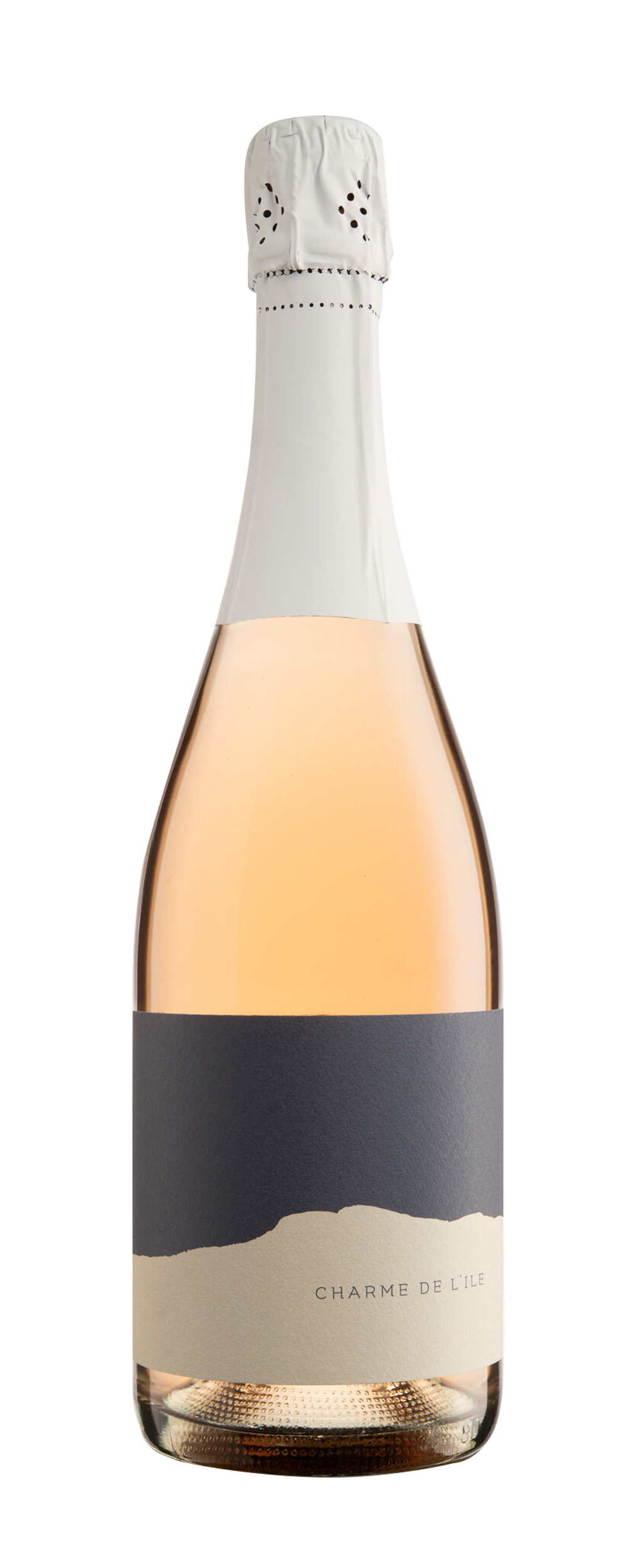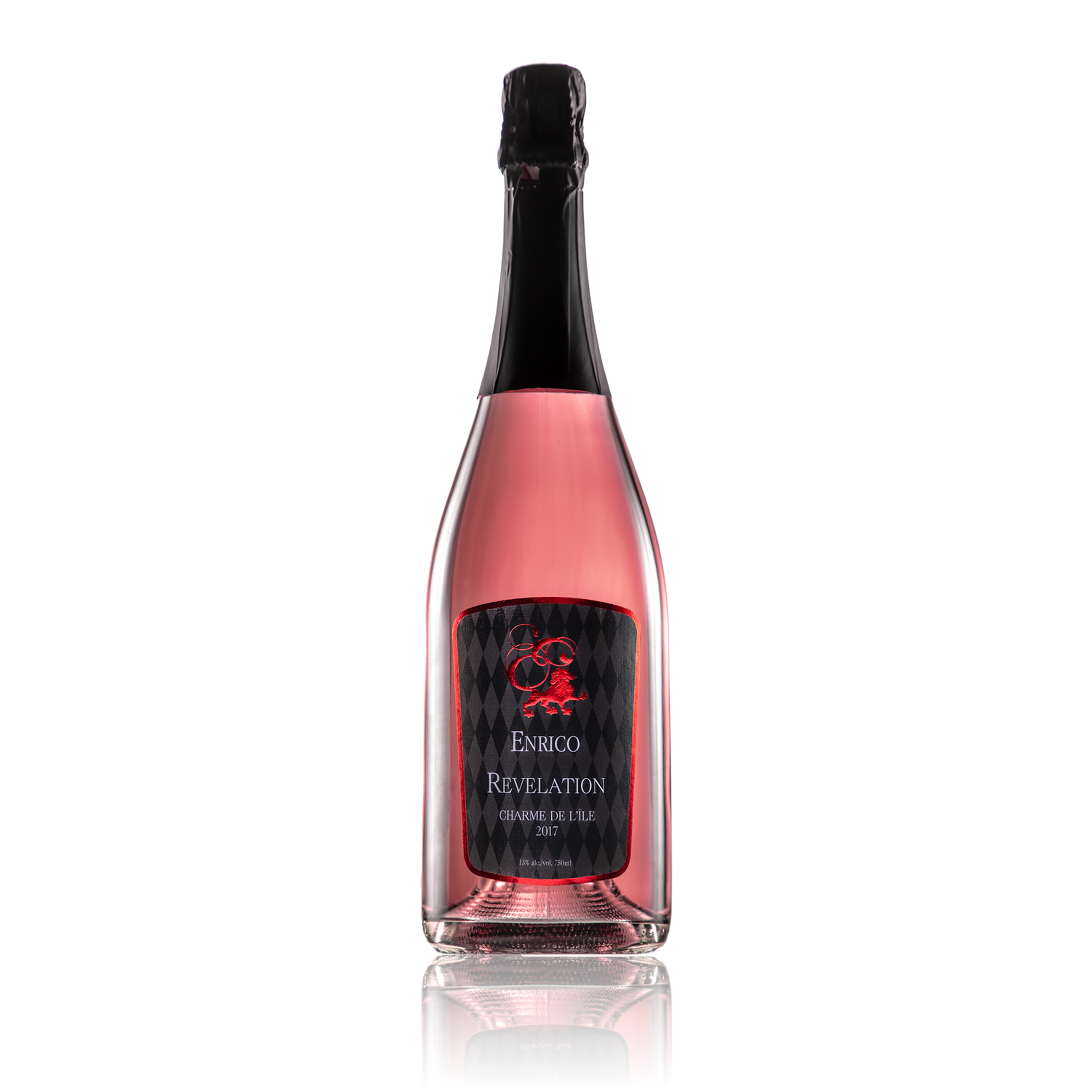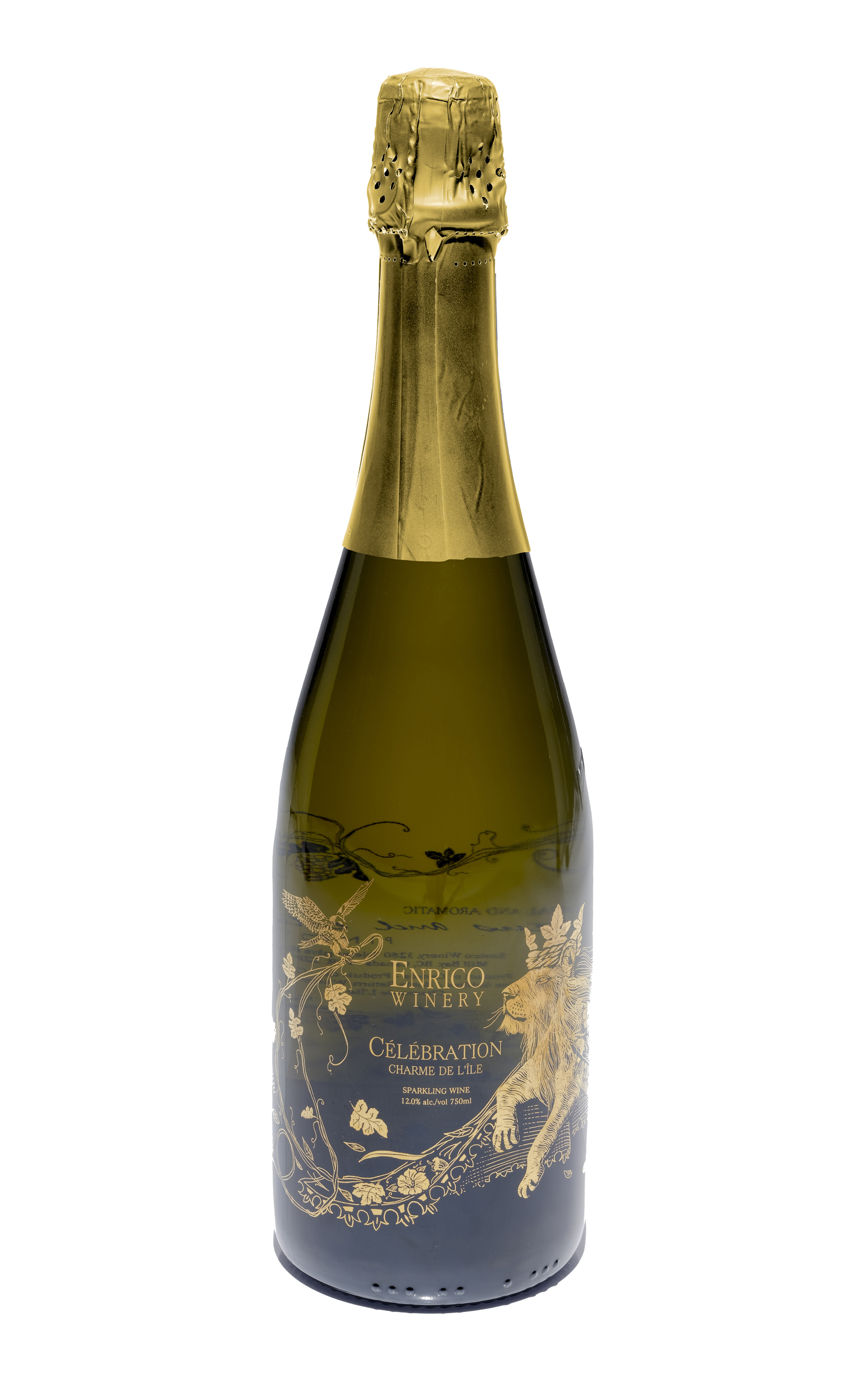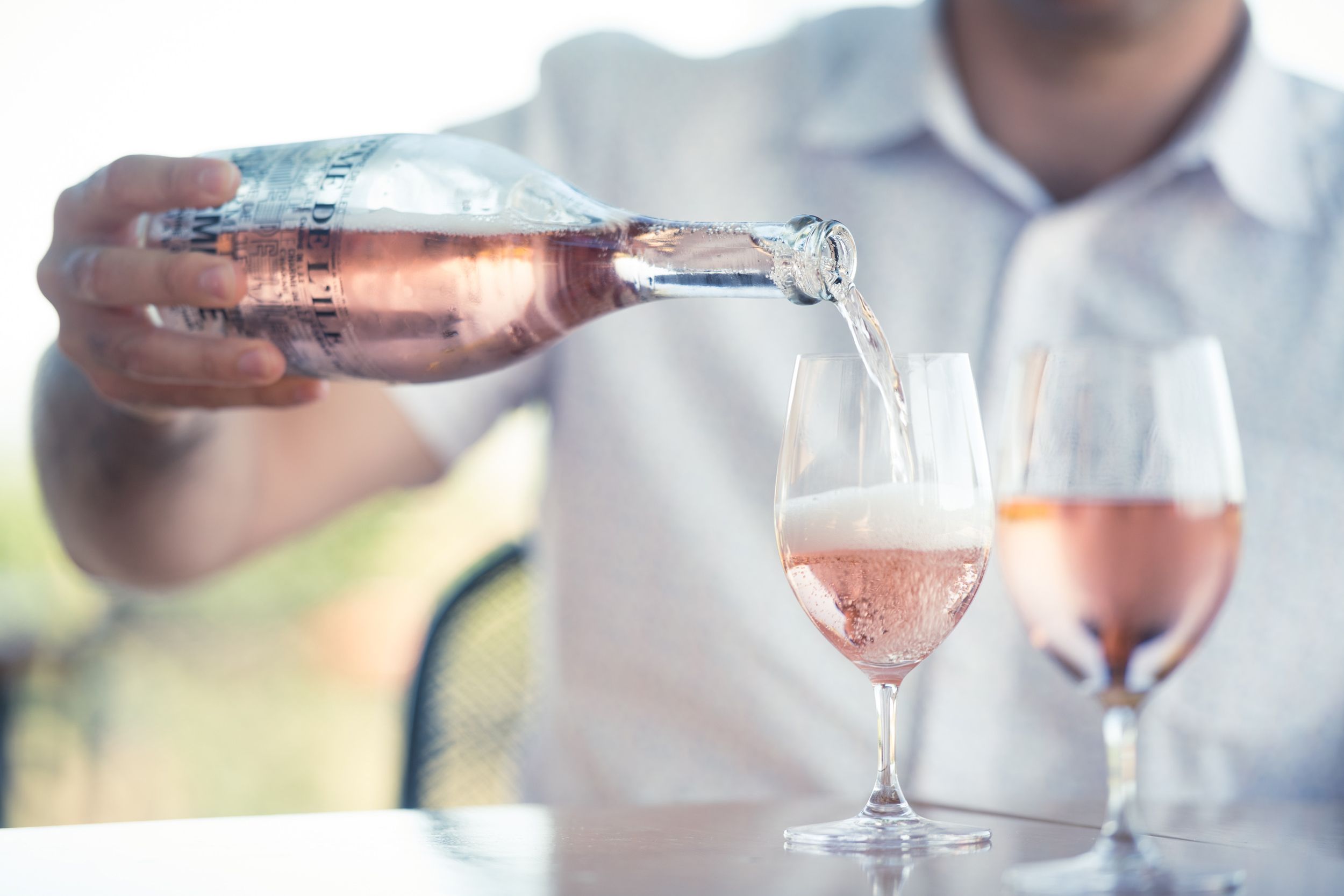Charme de L’Île
Not long after arriving from his native Quebec, winemaker Daniel Cosman realized the Cowichan Valley wine region had great potential, but it also had a great challenge: the climate. It is cool, northerly, damp and fickle, which means ripening grapes fully from year to year can be a somewhat fluid target.
Cosman, who is the head winemaker at Enrico Winery, wondered: “What can we produce, year after year, despite the fluctuating climate, that stands up to international quality and satisfies consumer demand?” He determined that sparkling wine was the answer, but that solution also came with a few problems: it is expensive to bottle and age sparkling wines that are produced using the traditional method.
So Cosman decided to hedge his bets with Charmat. Unlike traditional-method sparkling wines, which develop their bubbles when they undergo a second fermentation in the bottle, Charmat wines go through that second fermentation in pressurized stainless steel tanks.
“Charmat is a more streamlined process, at least in theory, than the traditional method,” explains Chris Turyk, marketing director of Unsworth Vineyards. Examples include Italian Prosecco and German sekt, which are softer and fruitier than traditional method wines like French Champagne and Spanish cava.
Cosman was convinced that the more approachable Charmat was the way forward for Vancouver Island, but it took a while to convince everyone else. “I fought long and hard with multiple owners to get it off the ground,” Cosman says. “Everyone said there is no market for sparkling wine.”
But having tried the excellent traditional bubbles at Vigneti Zanatta, Cosman knew that Island grapes would be ideal for sparkling wine. “I love the racy acidity of the wines on Vancouver Island,” he says. “When we have such wonderful acids, what better way to take advantage than to create wines that go with every food and with every occasion?”
He produced the first of what he called “Charme de L’Île” at Enrico Winery in 2012, and a year or two later, he made it for Unsworth, too. (For a while, he was head winemaker at both wineries.) Unsworth also purchased the first—and so far only—Charmat tank and bottling line on the Island.
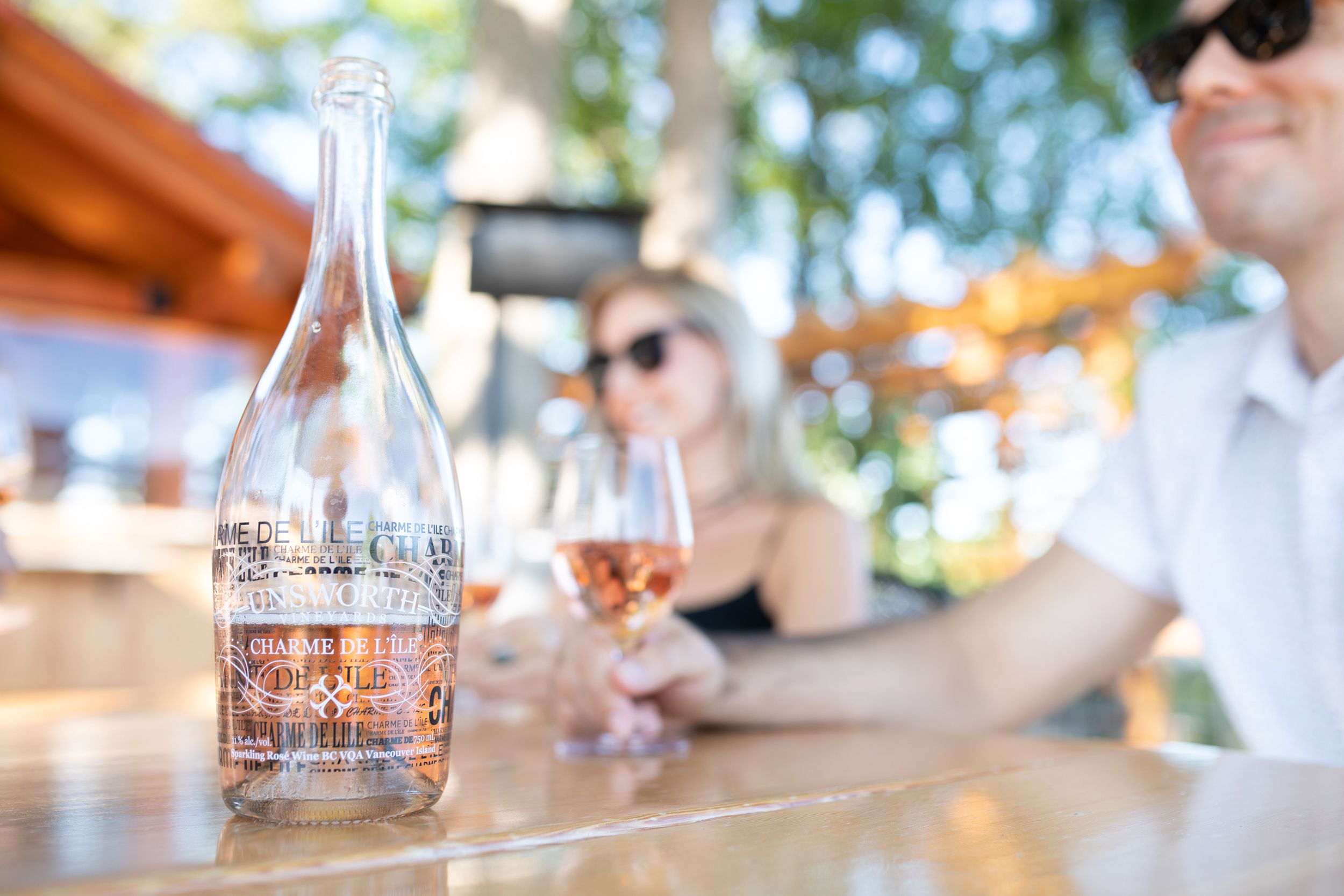
In 2017, Unsworth Vineyards and Averill Creek Vineyard applied jointly for a Canadian federal trademark, which was approved in 2019. “All we did to qualify for the trademark was say it had to be made with Island grapes in the Charmat method, 100% Island fruit,” Turyk says.
Since there is no restriction on grapes, each winery produces a distinctive version of Charme de L’Îsle. At Unsworth, the Charme is a blend of Pinot Gris, Pinot Noir and a splash of Auxerrois, while the rosé is all Pinot Noir. At Enrico, the Charme is all Pinot Gris (until next year, when it will be blended with Chardonnay) and the rosé is Pinot Noir. Averill Creek’s Charme is a blend of Pinot Noir and Pinot Gris; at Salt Spring Vineyards, it’s a blend of Petit Milo, Epicure and Amiel.
Whatever the grape, Charme de L’Île is “a little more lush and fruit forward” than traditional-method bubbles with their crisp, dry, brioche notes, Turyk says. “These are serious wines, but they don’t take themselves seriously.” Expect notes of citrus and stone fruits in the Charme, and bright red berries and rhubarb in the rosé. Both are fresh and lively, thanks to that bright, cool climate acid.
“We’re at high-latitude grape growing and we don’t see the sugar accumulation of warmer climates,” Turyk explains. “That’s also a reflection of not having a huge amount of aging. It’s floral, a little fresher, a little more frivolous. Whether it’s the acidity or the long, slow ripening, you don’t get these big flamboyant flavours. It’s easy-breezy and fun. Wine doesn’t always have to be cerebral, age-worthy, complex.”
Charme de L’Île is remarkably food friendly. It pairs well with seafood, fresh greens, cheeses and Asian flavours. The rosé, meanwhile, complements bolder flavours, even salty, smoky and spicy ones. “The Charme rosé is my favourite to pair with just about everything,” Turyk says.
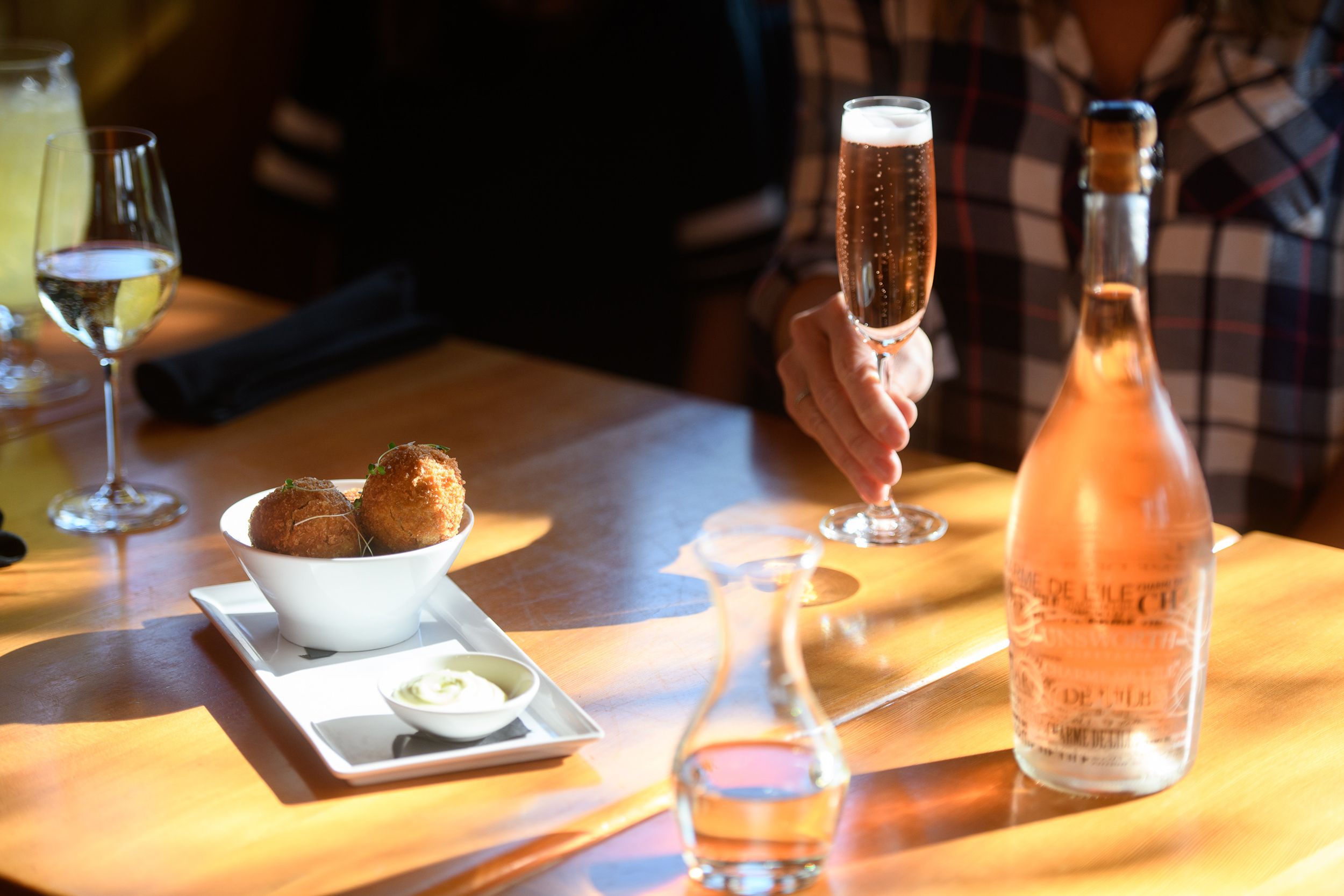 Charme de L’Îsle is also an easy sipper to enjoy on its own. “To me, it’s the wine you have before supper,” Cosman says.
Charme de L’Îsle is also an easy sipper to enjoy on its own. “To me, it’s the wine you have before supper,” Cosman says.
But perhaps more than anything, it is a taste of the future.
“I love the sparkling wines of the Island,” Cosman says. “They always give me the idea that the Island has a lot of potential unrealized.”
Celebrating with Island Bubbles
Sparkling wines are often the go-to choice for celebrations, but they can—and should—be enjoyed any time. Their high acid content and relatively low alcohol make them exceptionally food friendly, and the soft bubbles of Charmat-method wines like Vancouver Island’s signature Charme de L’Île are easygoing, fun and affordable. Here’s how to serve them:
– Sparkling wines should always be served icy cold, between 5° and 10°C (7°C is ideal).
– They should be served in tulip-shaped stemmed glasses or white wine glasses—not flutes, which trap aromas rather than expressing them, or coupes, which release them too quickly.
– Pair Charme de L’Île with seafood of any sort, as well as creamy and aged cheeses, many Asian dishes, leafy-green foods (like pesto, salads and asparagus) and most canapés.
– Pair the super-versatile pretty-in-pink Charme de L’Île Rosé with almost anything, including the salty, smoky and spicy foods that are a challenge for most wines. Think: charcuterie, smoked salmon, barbecued meat or veg, Middle Eastern and Spanish flavours.
